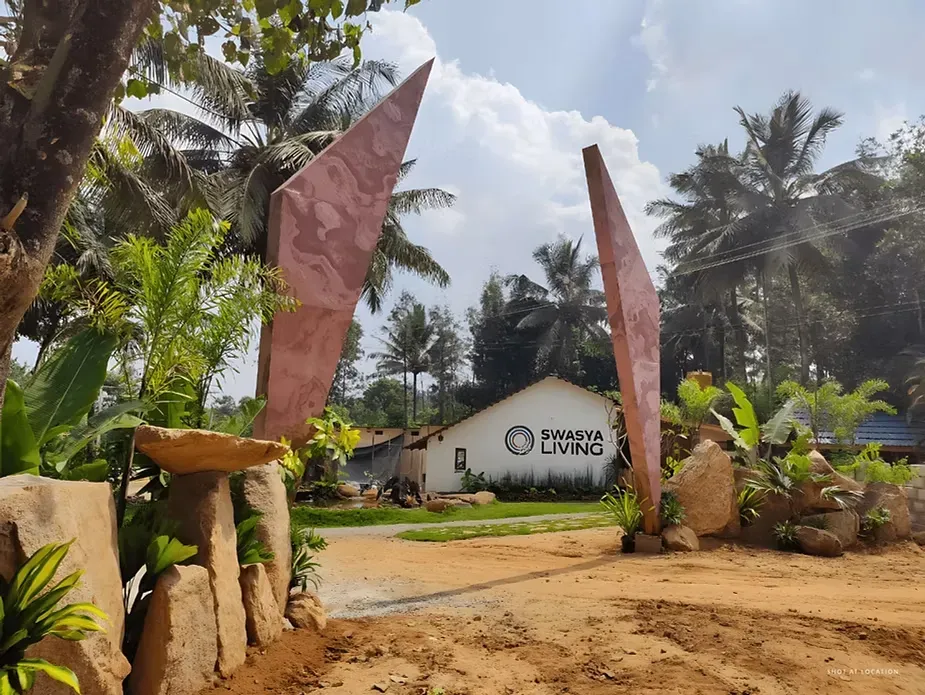How to Rent Unused Farmland: A Guide to Leasing Your Unused Farmland!
Published on July 25, 2025

The option to rent unused farmland provides an excellent pathway for people who want to establish their farms and grow their produce while earning additional revenue. This guide will provide step-by-step instructions for farmland rental that suits both professionals and novices alike. Let’s dive in!
Why Rent Farmland?
Buying land is not required for starting an agricultural business since renting farmland provides a viable entry point. The situation benefits landlords with uncultivated land because they obtain added value from its utilization.
You can effectively utilize rented land for crop cultivation as well as livestock farming and building small agribusiness operations. Land rental arrangements provide flexible terms that let you extend the period according to your unique aspirations.
How to Rent Unused Farmland? Step-by-by Process
Below are 7 vivid steps on how to rent farmland, check them out!
Step 1: Decide What You Want to Do
Before embarking on farmland acquisition one must decide how they intend to use the land. Ask yourself:
- Do you want to grow crops like corn, wheat, or vegetables?
- Are you interested in raising animals like chickens, goats, or cows?
- Do you want to start a small organic farm or a community garden?
Your plans require you to choose the appropriate land type. To grow crops you require locations that contain rich soil alongside available water supplies. Space, shelter, and grazing areas must be available to those who choose animal rearing.
Step 2: Find Unused Farmland
After deciding the attributes you need in a piece of land it is time to search for properties that are available for farming use. These steps will guide your effort to find available farmland:
- Ask Around Locally: The search should begin by speaking with individuals in your neighborhood. Inform everyone in your social network as well as members of your family and nearby neighbors about your search for farmland rental options. People tend to refer potential farmers to landowners who maintain unadvertised land.
- Check Online Listings: The rental listings for farmland can be found through Craigslist or Facebook Marketplace and agricultural forums. Specialized websites such as FarmLink and LandWatch provide additional venues to check.
- Nonetheless, contact all local farmers accompanying agricultural offices: The local farmers remain informed about empty fields within the territory. You should contact your county’s agricultural extension office because their staff possess both resources and connections that help you locate available land.
- Drive Around and Look: Driving through your geographical area remains an effective approach to locating abandoned farmland. Conduct your search for unused fields by observing areas that appear abandoned and locating their owners. The tax assessor’s office in your locality provides access to such information.
Step 3: Contact the Landowner
Contacting the landowner becomes the subsequent step after finding a suitable land parcel. You should handle your approach with professionalism and respect when you communicate with them. Introduce yourself before describing your plans for land ownership and learn whether they would consider a rental agreement.
The following questions will help your communication with the landowner:
- How long has the land been unused?
- What is the condition of the soil and water sources?
- Are there any restrictions on how the land can be used?
- What is the rental price, and are there any additional costs (like taxes or maintenance)?
Step 4: Inspect the Land
A complete check of the land must be performed before you start any rental agreement. Here’s what to look for:
- Soil Quality: Is the soil fertile and suitable for your needs? A soil analysis from a testing facility will let you understand its condition.
- Water Access: Is there a reliable water source for irrigation or livestock?
- The ability to drive vehicles and operate equipment without problems should be provided.
- Check whether barns fences or storage sheds along with other existing infrastructure features exist.
For assessment assistance consider joining forces with either a farmer who has experience or an agricultural expert for land evaluation purposes.
Step 5: Negotiate the Rental Agreement
The next step after you have found suitable land is the agreement negotiation for rental. Both the landowner and you need this to become an essential part of the agreement. The agreement must include the following points:
- One must determine both the payment rate and the frequency of payments which can be monthly, yearly, or other intervals.
- The duration of land rental should be specified in this section of the agreement. You should seek an agreement duration that will allow you to accomplish your objectives.
- The written document needs to specify precisely how landholders wish to use their property whether through farming animal husbandry or any other allowable activities.
- The agreement needs to establish who will perform duties such as mowing maintenance along with fencing responsibilities and making repairs to the land.
- The termination clause establishes conditions for agreement conclusion by either party before the designated lease period.
It is advisable to have your land lease agreement reviewed by an attorney to validate its legal and fair aspects.
Step 6: Prepare the Land
The agreement makes us focus on execution step by step. According to the land condition you should:
- Clear weeds or overgrown vegetation
- Test and amend the soil
- Install fencing or irrigation systems
- Build any necessary structures.
You should seek help from others when starting farming despite your inexperience. Agricultural experts who exist in local communities along with extension offices and online farmer groups will share useful advice.
Step 7: Start Farming!
Moving ahead to transform your ideas into practical achievements marks the enjoyable stage of work. All farming activities require commitment combined with perseverance together with consistent labor to succeed. Your dedication will turn an idle piece of land into a successful productive area.
Useful Tips for Success
- Absolute beginners in farming should establish their first farm operations within realistic boundaries. A beginner should begin with a limited farming area before expanding their operations post-acquisition.
- Establish contacts by interacting with nearby farmers. Providing farm support includes helping other businessmen and farmers by sharing their resources while potentially securing both business and partnership deals.
- Use Organization Systems to maintain a record of your financial costs and agricultural outputs together with essential farm information. Recordkeeping enables you to learn from your choices and gain experience that improves your situation in the future.
- Duly acknowledged that farming requires patience since it develops through experience. Every farmer must endure some obstacles so do not give up when confronted with difficulties.
Consider an Alternative: Investing in Swasya Living

While renting unused farmland can be a viable option for those looking to start an agricultural venture, an alternative investment opportunity that eliminates the challenges of farming is Swasya Living. Swasya Living offers managed farmlands, allowing investors to own agricultural land without the burden of day-to-day farming operations. With a professional team handling cultivation, land maintenance, and sustainable agroforestry, investors can enjoy passive income while contributing to eco-friendly farming practices.
Beyond financial returns, Swasya Living promotes a holistic lifestyle, combining nature, sustainability, and community-driven living. Investors gain access to thoughtfully designed farm communities with amenities such as eco-friendly cottages, clubhouses, and recreational spaces, making it a perfect blend of financial growth and sustainable living. Instead of navigating the complexities of farmland rentals and management, choosing Swasya Living ensures a hassle-free and rewarding investment in agriculture.
Final Thoughts
Owners of unused agricultural land can start their farming operations because of its availability. This process enables you to buy appropriate land for establishing agreements that produce successful harvests. The act of farming allows you to produce family-grown food while establishing your business and satisfying your personal feelings related to land-based labor.
So, what are you waiting for? Start your journey for farmland acquisition
